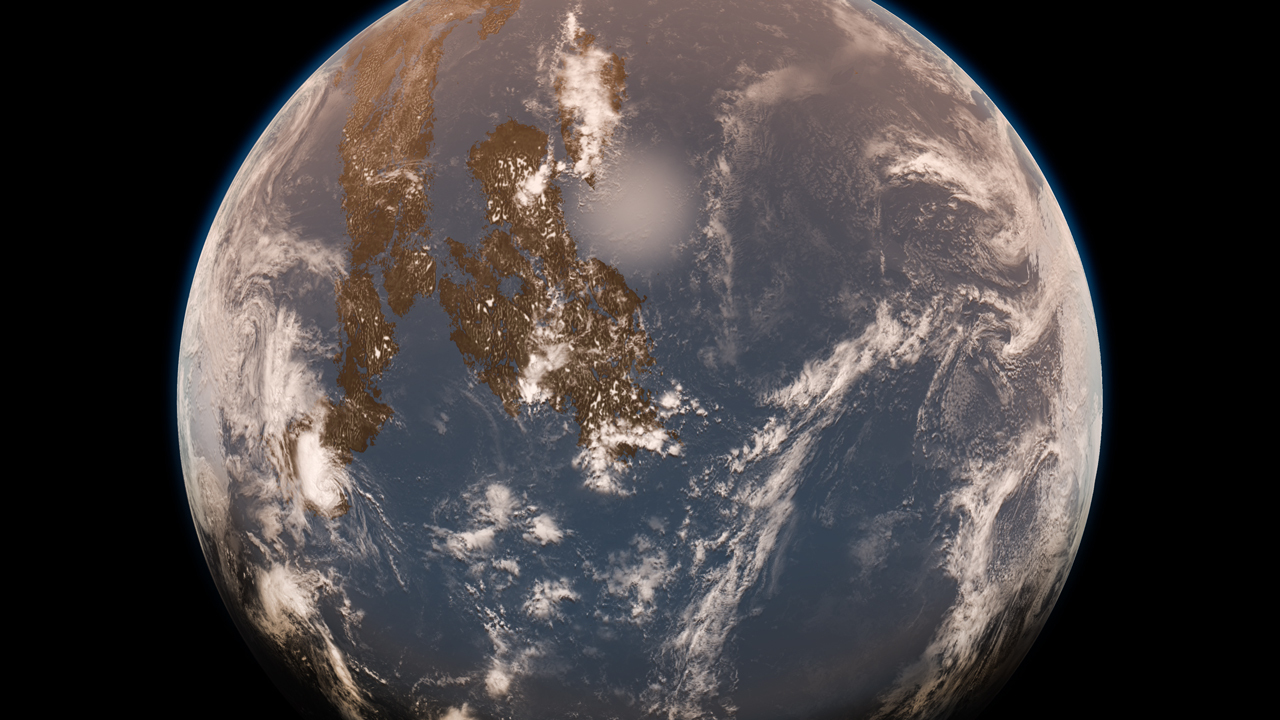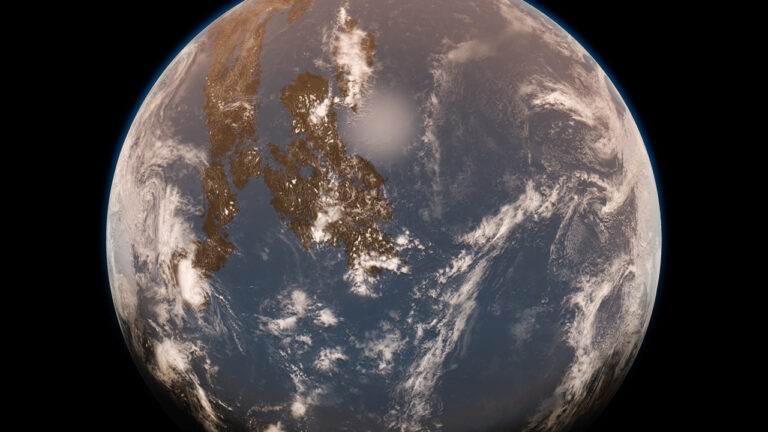Water dominated the Earth during ancient times.
Life and plate tectonics may have emerged on a planet drowned in water that was rejected by the mantle
Over time, sea levels have fluctuated in response to temperature changes, but it was previously believed that the overall amount of water on Earth remained constant. However, new evidence suggests that billions of years ago, the planet’s oceans contained nearly double the amount of water they do today, enough to submerge the tallest peaks of today’s continents. This flooding event may have jumpstarted plate tectonics and made it more challenging for life to originate on land.

According to recent research, rocks in the mantle – the layer of rock below the crust – contain at least as much water as an entire ocean, and possibly more. However, in the early days of Earth, the mantle was much hotter, which would have made it difficult for minerals to retain the same amount of hydrogen and oxygen. This implies that the excess water was located elsewhere, most likely on the surface.
This theory, based on laboratory experiments, is straightforward yet significant, according to Michael Walter, an experimental petrologist at the Carnegie Institution for Science.
The minerals wadsleyite and ringwoodite, which are high-pressure versions of the volcanic mineral olivine, are responsible for storing a significant portion of the water in the Earth’s mantle today. Although these minerals only account for 2% of their weight as water, they make up 7% of the Earth’s mass. Even a small amount of water stored in these minerals adds up to a substantial amount, according to Steven Jacobsen, an experimental mineralogist at Northwestern University.
Scientists such as Jacobsen have created these mantle minerals in the laboratory by subjecting rock powders to extreme pressures and high temperatures of at least 1600°C. The experiments demonstrate that these minerals hold slightly less water at higher temperatures. As the mantle cooled over time, these minerals became more abundant, allowing them to absorb more water as the Earth aged.
Geological evidence also supports the notion of a water-rich planet, according to Benjamin Johnson, a geochemist at Iowa State University. For example, titanium concentrations in 4-billion-year-old zircon crystals from Western Australia suggest that they formed underwater. Additionally, some of the oldest rocks on Earth, which are 3-billion-year-old formations found in Australia and Greenland, are pillow basalts that only form when magma cools underwater.
According to recent evidence, the planet’s total surface water might not have always been constant, despite the assumption that it was. The discovery implies that Earth’s oceans held nearly twice as much water some 3 to 4 billion years ago, enough to submerge today’s continents above the peak of Mount Everest. Some minerals found deep in the mantle, namely wadsleyite and ringwoodite, store most of the planet’s water today. These minerals have been created in experiments by squeezing rock powders to tens of thousands of atmospheres and heating them to 1600°C or more. The experiments suggest that as the mantle cooled, the minerals themselves would become more abundant, adding to their ability to soak up water as Earth aged.
There is also geological evidence, such as the titanium concentrations in 4-billion-year-old zircon crystals from Western Australia suggesting that they formed underwater. Furthermore, some of the oldest known rocks on Earth, 3-billion-year-old formations in Australia and Greenland, are pillow basalts, which only form as magma cools underwater. Johnson and Boswell Wing’s study offers further evidence. Samples from a 3.24-billion-year-old chunk of oceanic crust left on Australia’s mainland were far richer in a heavy oxygen isotope than the present-day oceans, implying that the continents had barely emerged by that point.
While the larger ocean would have made it harder for the continents to emerge, it could explain why they appear to have been on the move early in Earth’s history, and could have helped kick off plate tectonics. A larger ocean exacerbates the biggest strike against the underwater scenario for how life began on Earth: the ocean would have diluted any nascent biomolecules to insignificance. However, it also complicates the thin pond scenario, which would have frequently evaporated, creating a concentrated bath of chemicals.
The ancient water world highlights how conditional Earth’s evolution is. The planet was likely parched until water-rich asteroids bombarded it shortly after its birth. If the asteroids had deposited twice as much water or the present day mantle had less appetite for water, then the continents, so essential for the planet’s life and climate, would never have emerged.
Do not forget to share your opinion with us to provide you with the best posts !




0 Comments